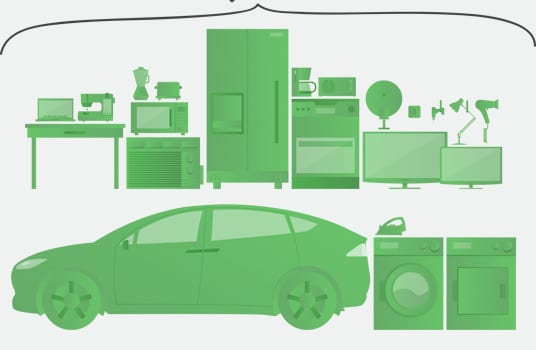Google has just officially launched the Little Box Challenge, a $1 million competition that could help push the cost of rooftop solar panels down through the floor and into the basement. The prize goes to anybody who can come up with a tablet-sized version of an inverter. If you don’t know what an inverter is, that’s okay. It’s this thing which everybody ignores because it’s not particularly sexy and it doesn’t have a reality show (yet), but it is an essential part of the rooftop solar power package and other solar harvesting systems.

The Little Box Challenge
So, what’s up with the Little Box Challenge, and what’s the big deal over inverters?
An inverter is a device that converts DC (direct current) to AC (alternating current). If you have rooftop solar panels you gotta have one of these things because when solar cells take in sunlight, they spit out electricity in the form of DC, and that would fry the brains out of everything in your house including your home charging station (that’s probably why Google included that generic EV in the infographic above).
You need something to convert DC to AC, and that’s where the inverter comes in.
The problem, at least as far as Google sees it, is that a typical inverter is the size of a cooler, which Google feels is too big. Google feels (don’t laugh, companies have feelings, too) that a much smaller inverter would “enable more solar-powered homes, more efficient distributed electrical grids, and could help bring electricity to the most remote parts of the planet.”
While size matters to us, too, we’re not quite as obsessed as Google is. Smaller is not necessarily more efficient. However, we can think of lots of ways in which smaller is better, and smaller can also lead to improved efficiencies. The more efficient the inverter, the better, since more of the collected solar energy gets whipped into the form of a usable current.
Specifically, Google says it is aiming for the size of a tablet. Go ahead, Google, you can say iPad — kidding!
Hey, What About Microinverters!
Actually, there already are these things called microinverters, which can be built into individual solar panels. We took note of them back in 2011, when a company called BenQ Solar introduced its “plug-and-play” rooftop solar panel with a built-in microinverter, which looks suspiciously like, you guessed it, a tablet.
The problem is that one conventional microinverter can’t handle a whole array of rooftop solar panels, so then the question is which is more cost-effective and/or has broader potential for applications: installing an array of panels each with its own built-in microinverter, or coming up with one new, superpowerful, hyper-efficient, cutting edge microinverter that can handle the whole thing at once.
Just a wild guess, but we’re thinking that relatively conventional, relatively low cost microinverters will continue to play a role in the rooftop solar panel market, but if the Little Box Challenge pulls in a winner then relatively expensive new microinverter technology could make gains in the building-integrated solar market as well as in rooftop arrays.
What About The Gallium Nitride?
Since the Little Box Challenge suggests that you take a look at gallium nitride if you want to grab the prize money, let’s take a closer look at that gallium nitride.
Gallium nitride is a compound material with a crystalline structure, commonly used as a semiconductor in LEDs as well as inverters.
CleanTechnica first took note of the Little Box Challenge when Google leaked word out last May, further noting that Google Ventures is an investor in Transform. That company is focusing on making gallium nitride more efficient, so Google stands to gain big if you can make more inverters while using less gallium nitride.
For the record, the Little Box Challenge also suggests that you explore the possibility of using silicon carbide.
Also for the record, Google’s partner in the Little Box Challenge is IEEE, which stands for the Institute of Electrical and Electronics Engineers. They will love you if you pronounce their acronym “Eye-triple-E” instead of sounding like you just broke your toe.
Source: CleanTechnica. Reproduced with permission.










